今回は、がんサバイバーを対象に高強度と低~中強度の運動を行い、効果のある運動強度について調査した研究を紹介します。
がんサバイバーに対しては中等度~高強度の運動が推奨されており、その効果が認められています。
しかし、実際のところ、高強度の運動は実施しにくく、低強度の運動でも効果が期待できることも紹介してきました。
そこで今回は、がんサバイバーを対象に高強度と低~中強度の運動を行い、効果のある運動強度について調査した研究を紹介します。
・高強度運動でも低~中強度運動でも、6ヶ月の運動介入で同程度のQOLの向上が認められた。
・まずは、強度に関係なく、患者自身が可能な範囲で運動を継続することが重要である。
・10-20分程度のウォーキングとスクワットを10回×3セットくらいから開始してみましょう。
今回紹介する研究の概要
今回紹介する論文は、がんサバイバーを対象に高強度と低~中強度の運動を行い、効果のある運動強度について調査した内容になっています。
「Ax AK, Johansson B, Lyth J, Nordin K, Börjeson S. Short- and long-term effect of high versus low-to-moderate intensity exercise to optimise health-related quality of life after oncological treatment-results from the Phys-Can project. Support Care Cancer. 2022 Apr 7.」、2022年に発行された最新の論文です。
ぴったりのインストラクターを探せる【オンラインエクササイズ LOOOM】対象
Participants were consecutively recruited at three university hospitals in Sweden from September 2014 to March 2015 (UC) and March 2015 to May 2018 (RCT) (Fig. 1). Participants were eligible if diagnosed with breast, colorectal or prostate cancer and scheduled for (neo)adjuvant oncological treatment. Exclusion criteria were inability to perform basic activities of daily living, cognitive disorders, severe emotional instability, or other conditions for which physical exercise is contradicted. The sample size calculation in the RCT was based on the primary outcome of cancer-related fatigue (assessed with the Multidimensional Fatigue Inventory [22]) [21]. The study was approved by the Swedish Ethical Review Authority in Uppsala (Dnr 2014/249). Written informed consent was obtained from all participants.
Ax AK, Johansson B, Lyth J, Nordin K, Börjeson S. Short- and long-term effect of high versus low-to-moderate intensity exercise to optimise health-related quality of life after oncological treatment-results from the Phys-Can project. Support Care Cancer. 2022 Apr 7.
対象は2014年9月から2015年3月、2015年3月から2018年5月にスウェーデンの3つの大学病院に受診された、乳がん、大腸がん、前立腺がんのアジュバント治療を予定している患者さんです。
合計544名が18ヶ月までのフォローアップを実施出来ました。
除外基準は、基本的な日常生活動作ができない、認知障害、重度の情緒不安定などでした。
ぴったりのインストラクターを探せる【オンラインエクササイズ LOOOM】方法
The exercise programme consisted of endurance training and resistance training for 6 months and was initiated when the oncological treatment started, as described in detail elsewhere [20, 21]. For endurance training (home-based), participants in HI performed interval sessions twice a week, alternating between 2 min of exercise (e.g. running) at an exercise intensity of 80–90% of the heart rate reserve (HRR) with 2 min of active rest (e.g. walking). Participants started with 5 intervals and were adding intervals up to a maximum of 10 intervals. In LMI, participants performed at least 150 min per week (i.e. walking and bicycling) at an exercise intensity of 40–50% of the HRR in bouts of at least 10 min. HRR was determined from VO2max test performed at baseline. Heart rate monitors were used for monitoring of exercise intensity. The resistance training was supervised and performed twice a week in groups in a public gym. The HI group performed 6 repetitions maximum (RM) × 3 sets (first weekly session) and 10 RM × 3 sets (second weekly session). The LMI group performed 12 repetitions (50% of 6 RM) × 3 sets (first weekly session) and 10 repetitions (50% of 10 RM) × 3 sets (second weekly session). The progression was based on testing of 6 and 10 RM every 4–6 weeks. The resistance training was performed on machines: seated leg press, chest press, leg extension, seated row, seated leg curl and seated overhead press using dumbbells. In addition, core exercises were performed. Participants were closely monitored. The coaches checked for intensity and overall adherence to the exercise protocol and gave feedback on the exercise being performed. Adverse events during exercise were assessed by both coaches and participants and revealed mainly minor musculoskeletal injuries and/or discomfort [23].
Ax AK, Johansson B, Lyth J, Nordin K, Börjeson S. Short- and long-term effect of high versus low-to-moderate intensity exercise to optimise health-related quality of life after oncological treatment-results from the Phys-Can project. Support Care Cancer. 2022 Apr 7.
運動プログラムは6ヵ月間の持久力トレーニングとレジスタンストレーニングで構成され、治療開始時に開始されました。
高強度(HI)と低~中強度(LMI)のグループに分けて比較しています。
持久力トレーニング(自宅ベース)では、HIの参加者は、心拍予備量(HRR)の80~90%の運動強度で2分間の運動(例:ランニング)と2分間の活動的休息(例:ウォーキング)を交互に行うインターバルセッションを週2回行いました。
参加者は5インターバルから開始し、最大10インターバルまでインターバルを追加しました。
LMIでは、参加者は少なくとも週150分、HRRの40~50%の運動強度で10分以上の運動を行いました(例:ウォーキングやサイクリング)。
レジスタンストレーニングは、公共のジムで週2回実施しています。
HI群は、最大6回(10RM)×3セット(1週目)、10回(10RM)×3セット(2週目)を実施しました。
LMIグループは12回(6RMの50%)×3セット(1週目)、10回(10RMの50%)×3セット(2週目)を実施ました。
レジスタンストレーニングは,マシンを用いた運動と,ダンベルを用いたシーテッドレッグプレス,チェストプレス,レッグエクステンション,シーテッドロー,シーテッドレッグカール,シーテッドオーバーヘッドプレスを実施し、さらに、コアエクササイズも行いました。
ぴったりのインストラクターを探せる【オンラインエクササイズ LOOOM】結果
Ax AK, Johansson B, Lyth J, Nordin K, Börjeson S. Short- and long-term effect of high versus low-to-moderate intensity exercise to optimise health-related quality of life after oncological treatment-results from the Phys-Can project. Support Care Cancer. 2022 Apr 7.
こちらは運動介入前後のQOL評価の結果になります。
青線が高強度運動、オレンジ線が低~中強度運動、灰色線が通常ケアのコントロールになります。
運動後6ヶ月の時点でHIとLMIは通常ケアのコントロールと比較してQOLが有意に高くなっています。
一方で、HIとLMIでは差は認められません。
ぴったりのインストラクターを探せる【オンラインエクササイズ LOOOM】結論
In conclusion, patients with breast, colorectal and prostate cancer can exercise at either intensity level according to their personal preferences and will still benefit from short-term and long-term improvements in HRQoL. The key clinical message is to recommend patients to exercise according to their personal condition. Exercise on low-to-moderate intensity is sufficient to achieve beneficial health effects and to improve symptoms of the oncological treatment. Future studies are needed to confirm our results in broader clinical populations.
Ax AK, Johansson B, Lyth J, Nordin K, Börjeson S. Short- and long-term effect of high versus low-to-moderate intensity exercise to optimise health-related quality of life after oncological treatment-results from the Phys-Can project. Support Care Cancer. 2022 Apr 7.
結論として、乳がん、大腸がん、前立腺がんの患者さんは、個人の好みに合わせてどちらの強度で運動しても、短期的・長期的にHRQoLの改善の恩恵を受けることができると考えられます。
重要なことは、患者さんの状態に応じて運動するよう勧めることです。
低から中程度の強度の運動は、有益な健康効果を達成し、がん治療による症状を改善するのに十分であると考えられます。
低~中強度の運動でも効果があるという結果でしたね。
まずは運動を開始することが何よりも重要なようです。
ただし、低~中強度運動といっても、この研究では週150分以上の有酸素運動と数種類の筋力トレーニングを10回×3セットを週2回実施しているので、少々ハードルは高いですね。
まずは毎日10-20分程度のウォーキングとスクワットを10回×3セット継続することから頑張るくらいから始めてみましょう!
ぴったりのインストラクターを探せる【オンラインエクササイズ LOOOM】・高強度運動でも低~中強度運動でも、6ヶ月の運動介入で同程度のQOLの向上が認められた。
・まずは、強度に関係なく、患者自身が可能な範囲で運動を継続することが重要である。
・10-20分程度のウォーキングとスクワットを10回×3セットくらいから開始してみましょう。
このブログは、ガイドラインや論文などの根拠をもとに情報を発信していく予定です。
しかし、がんの病態や治療方法によっては、お読みになっているがん患者さんにはその情報が当てはまらない場合もあります。
記事の内容を参考に新しく何かを始める場合には、担当の医師や医療従事者にご確認いただくようお願いいたします。




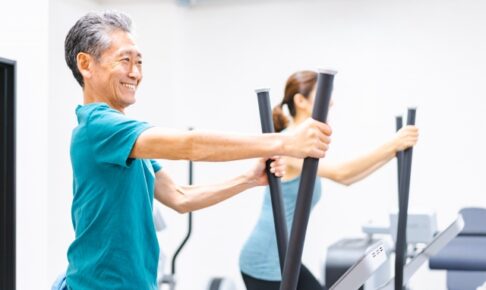
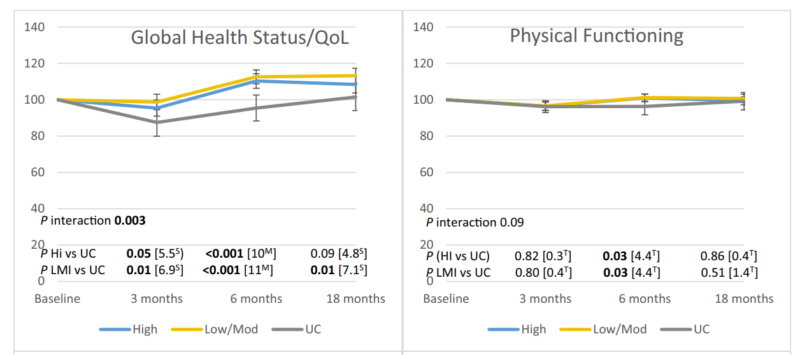

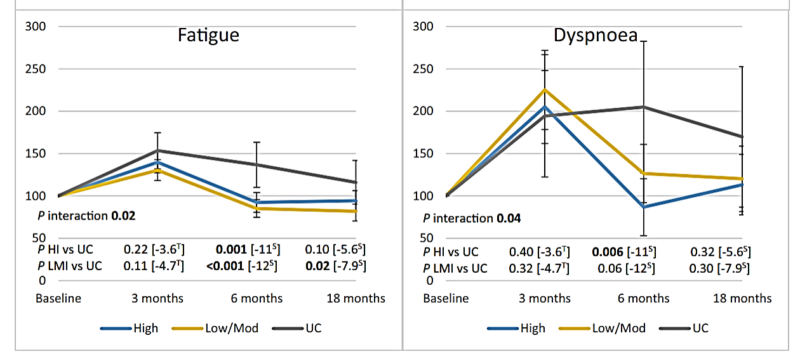





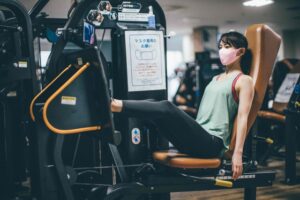
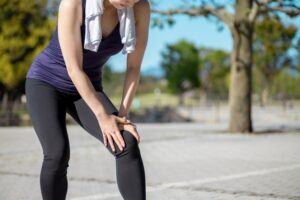



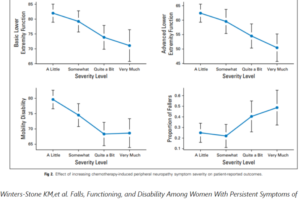









最近のコメント